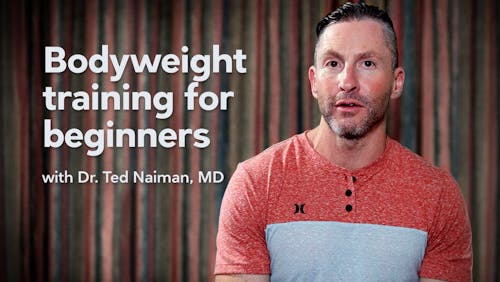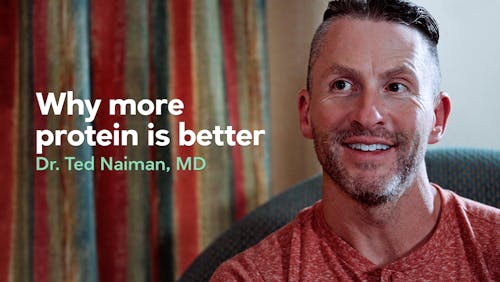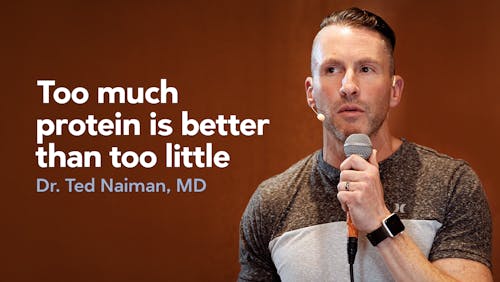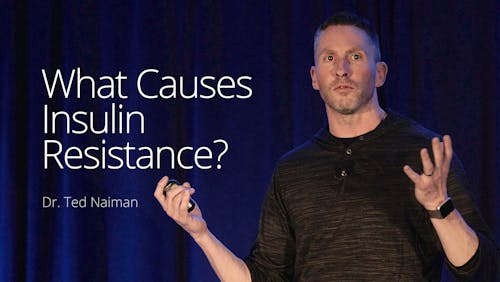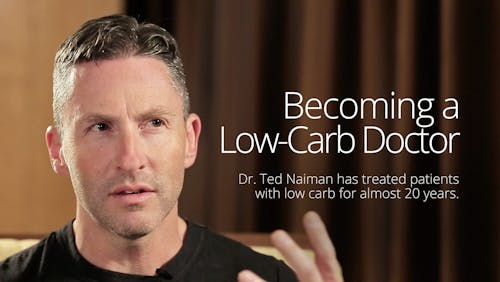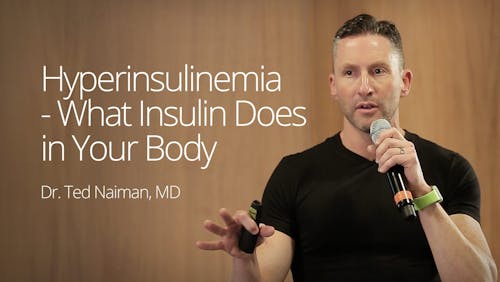Dr. Ted Naiman to help hone higher protein options for better weight loss

We have some exciting news: Seattle family doctor and protein expert Dr. Ted Naiman is joining the Diet Doctor team.
Dr. Naiman will be helping us to help you more effectively lose weight, improve your health, and improve your body composition.
He’ll be helping you understand how to potentially leverage higher levels of protein and nutrients in your low-carb diet for better results.
“Ted is a rare kind of doctor,” says Dr. Andreas Eenfeldt, founder and CEO of Diet Doctor. “He’s extremely insightful about practical lifestyle interventions for improving health and weight. Ted knows a lot about what works and how to communicate it.”
“I’m super happy about working with him to make our website and products even more empowering for people,” Dr. Eenfeldt says.Dr. Naiman is a clinical expert on the relationship between getting enough protein versus getting too much toxic energy from carbs and fat. He calls this relationship the protein-to-energy ratio of foods, or P:E.
“I am very excited to join Diet Doctor’s passionate and dedicated team,” says Dr. Naiman, who is the author of The P:E Diet: Leverage your biology to achieve maximum health. “What I bring is decades of real-world patient experience and a deep experience of nutrition and metabolism.”
Avid following for his insights
Dr. Naiman has some 63,000 Twitter followers for his health, fitness, and protein-to-energy insights, which include creative but simple infographics that communicate complex nutritional information.
He will be working one day a week for the company and the rest of the week continuing with his busy primary care practice in Seattle.
“What’s my particular direction and focus for Diet Doctor? It will be helping people maximize satiety per calorie using tools like protein percentage, energy density, and nutrient density,” Dr. Naiman says.1
Those terms all relate, in general, to the quality of the protein and minerals in the food you eat compared to the excess energy — or empty calories — from carbs and fat that have no nutrient value.
By increasing the protein percentage of your food, while still keeping your carbs low, you may lose more weight, reduce your body fat, and increase lean muscle — thereby improving your body composition.
In the months ahead, Dr. Naiman will help us explain and actualize these more complex nutritional concepts in simple terms. He’ll also advise Diet Doctor on programs and meal plans to help people achieve maximum results in weight loss and health improvement.
The goal will be to help you figure out if a higher protein approach is right for you and to help you determine what level of protein you should eat, while still enjoying satisfying and delicious food.
Pioneering low-carb physician
To understand how Dr. Naiman will aid this expansion of the Diet Doctor offerings, it helps to understand Dr. Naiman’s story as a low-carb physician who has been helping patients for more than 20 years.
As detailed in an in-depth 2018 profile on Diet Doctor, Dr. Naiman trained first as an engineer and then went into medicine. He was a newly graduated medical student in 1997 when a formerly obese patient with diabetes came in for an appointment. The patient had lost more than 30 pounds and reversed his diabetes by using the low-carb Atkins diet.
Dr. Naiman was “blown away” by his patient’s amazing transformation — and then perplexed by his medical superiors’ complete dismissal of the diet and the patient’s results.
This propelled him to learn everything he could about carbohydrate restriction, as well as the role of the macronutrients fat and protein, and the body’s need for various essential nutrients. He applied his engineering skills in “root cause analysis” to examine how the food we eat contributes to poor health and obesity.
Raised in a vegetarian environment, Dr. Naiman tried a low-carb diet himself and saw his health transform. Painful eczema that had plagued him since childhood went away, as did his obsessive-compulsive disorder. He greatly improved his body composition.
He began recommending low-carb or keto diets to patients more than two decades ago, making him one of the pioneering US physicians with a long track record of helping patients with the diet. He estimates he has now helped thousands of patients with a low carb or keto diet, many of whom have had extraordinary results in health improvement and weight loss.
But why did some patients stall?
Over the years, however, he noticed a recurring issue: not everyone doing a low-carb or keto diet achieved great, long-lasting success.
“I’ve seen so many patients in my practice go on keto, lose 20 pounds, get fat-adapted, feel great and then stall out super hard,” Dr. Naiman says.
Some were simply unable to lose more weight even though they had lots to lose; others might even start gaining weight while still cutting out all the carbs.
What was happening?
“I had to try to figure it out and I realized on a high-fat keto diet, some people were treating fat as if it were a free food. Once carbs were out of the equation, it really comes down to the fat. If you eat more grams of fat than you burn every day, then you are not really going to lose any weight and you may even gain weight.”Dr. Naiman realized that, when few carbs were in the diet, the culprit for stalls or poor results was usually excess fat with high energy density: butter, oils, heavy cream, fat bombs, high-fat nuts, and high-fat dairy.
When stalled-out patients started watching and reducing the excess fat (while still keeping carbs low), and increasing their consumption of satiating protein and fiber, they did not go hungry, but they did start to lose weight again.
“I’ve now had a ton of success getting patients to eat lower energy density foods by upping their protein and fiber and minimizing not only their refined carbs but their excess fats as well,” Dr. Naiman says.
What is the P:E of your food?
Through this clinical experience, his concept of the protein-to-energy ratio, or P:E, was born. This literally means: how much protein are you eating in relation to refined carbs and high-energy fats? For more success, increase the protein and fiber while decreasing carbs and fat. This increases the “satiety per calorie” and the nutrient density of your food.
Dr. Naiman recommends, wherever you are in your diet, that you try to incrementally increase your protein and fiber to see how you feel. See if that change helps you lose more weight and body fat.
Based on Dr. Naiman’s advice, Dr. EenfeIdt has been deliberately increasing his protein and fiber intake, after more than 15 years on a low-carb or keto diet. While always fit, healthy, and at a good weight, Dr. Eenfeldt was surprised when he, too, dropped more pounds, reduced his waist size and his body fat percentage, while increasing his lean muscle mass and strength. His blood pressure reduced, too.
“It’s been very eye-opening for me after doing a low-carb diet for so long that I still could lose some more body fat without hunger and I could still improve various health markers,” Dr. Eenfeldt says.“It’s clear, both in the research science and clinical experience, that by targeting foods that are high in protein, you end up meeting your essential nutrient needs and feeling full while eating less energy, which may help you lose weight,” Dr. Eenfeldt says.
D. Eenfeldt added, however, that “If you are doing the keto diet for epilepsy, or other neurological conditions, or are at a weight you are happy with, you can be more generous with the fat.”
Over the months ahead, Diet Doctor will help you find out if the higher protein approach is right for you as an additional option. Have no fear! Our vast array of delicious recipes will not change, we will be just adding some higher protein recipes and meal plans and helping you understand how to find out which approach is best for you.
You may notice that we will talk a bit more about protein versus energy (i.e. carbs and fat) as a percentage of calories of various foods and meals. And there may be less emphasis on added fat in recipes so that it helps you understand that fat is not a “free food” but a lever for weight loss that you can adjust based on your needs.
Dr. Eenfeldt notes that Diet Doctor is committed to constantly evaluating the science and adjusting our guidance to our members and followers in light of new information — while still helping everyone enjoy delicious, satisfying food that improves their health and helps them achieve a weight that is right for them.
We are delighted that Dr. Naiman will now become a valued team member to help us further empower our members to reach their health and weight goals.
—
By Anne Mullens
More with Dr. Naiman
Website: BurnFatNotSugar.com
Twitter: Ted Naiman
Dr. Ted Naiman's videos
The protein percentage of a food is how much protein contributes to a food’s total calories, excluding calories from fiber, in comparison to its fats and carbs. Energy density is the amount of energy or calories in a specific weight of food, usually expressed as calories per gram. Nutrient density is the number of micronutrients, minerals, and vitamins per calorie. ↩

